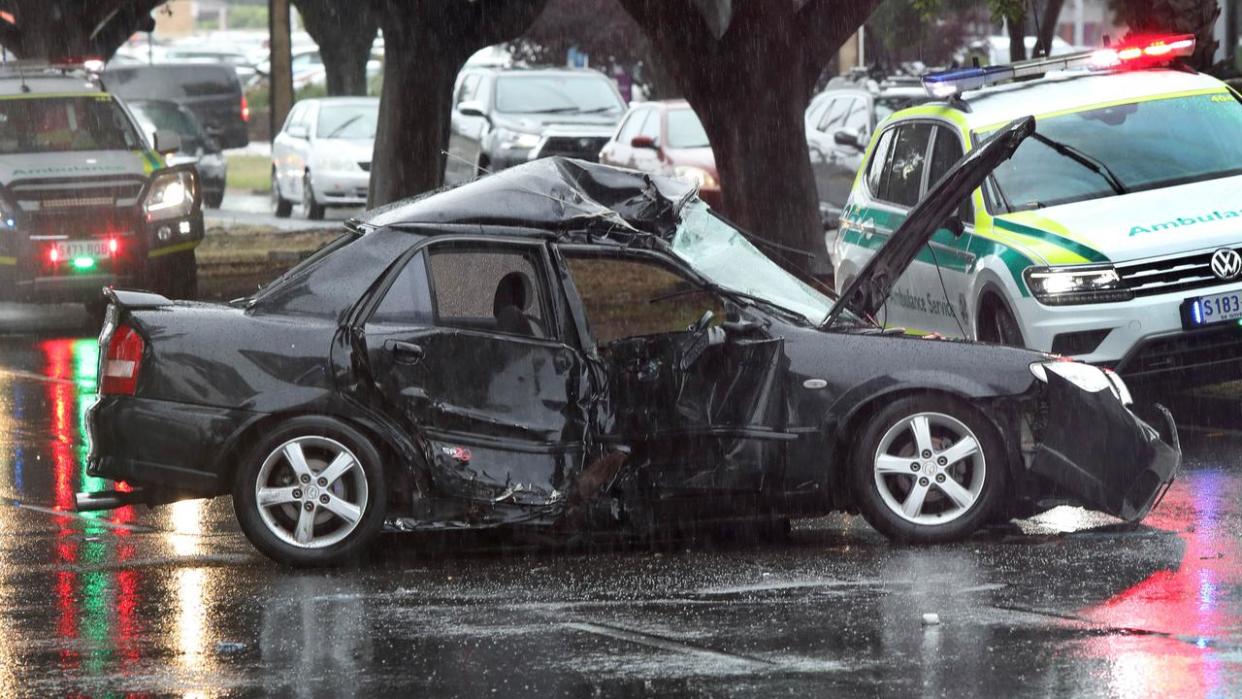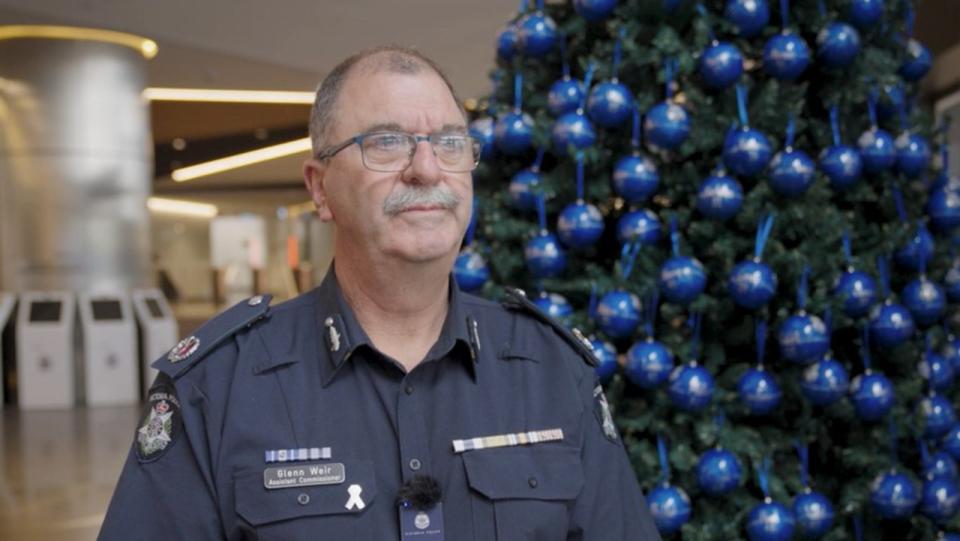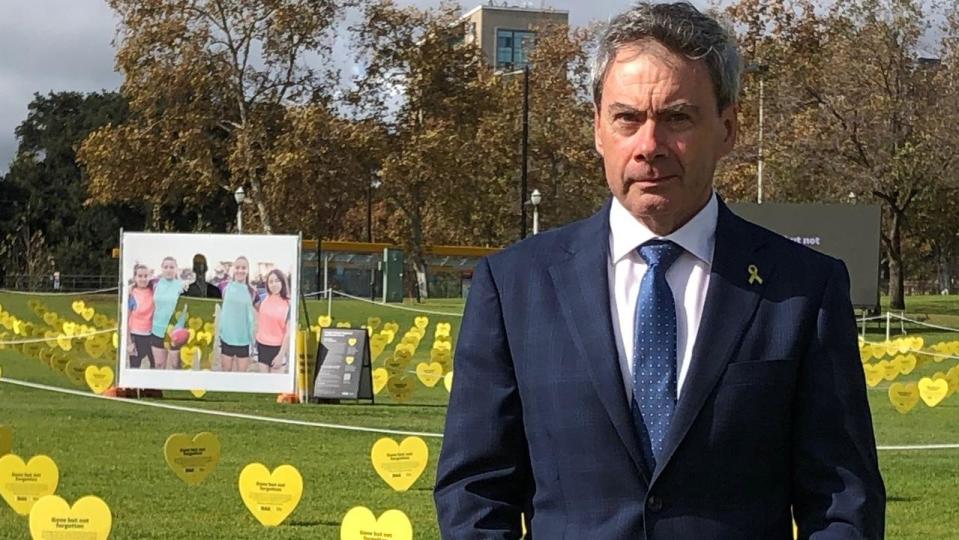Shocking way 1247 killed in one year

It’s Friday night and four young friends are out together celebrating Schoolies at the beachside town of Goolwa Beach, south of Adelaide.
It should have been just another night in their long lives, but it turned into tragedy when one of the four, Charlie Stevens, was killed in an alleged hit-and-run crash.
Charlie was the son of South Australian Police Commissioner Grant Stevens and his death has shocked the state and cast a fierce torchlight on the gruesome spike in road deaths that have pummelled South Australia across 2023.

But the state is not the only one grappling with a horror year on the roads, with some jurisdictions recording sharp increases in road deaths.
In early November, the regional Victorian town of Daylesford was changed forever when a BMW X5 mounted the kerb and crashed into the Royal Daylesford Hotel beer garden on a Sunday at 6pm.
Pratibha Sharma, her nine-year-old daughter Anvi, and her partner Jatin, 30, were killed in the horror crash along with two members of the Bhatia family, father Vivek, 38, and his son Vihaan, 11.

Australia’s Indian community went into mourning following their deaths, with multiple people taking to social media to express their grief.
“Very shocking and saddened to hear about Pratibha Sharma, her husband Jatin Chugh, their daughter Anvi, another Indian community member, Vivek Bhatia and his son’s demise in Daylesford’s tragic car crash,” Tanvi Mor wrote.
“May the departed souls rest in peace. Om Shanti”.
The tragic loss of life has left police officers exhausted and desperately calling on the public to “wake up and grow up” to stop the carnage.
How do the states and territories compare?
2023 has proved a deadly year, with states like South Australia and Victoria recording substantial increases from road death tolls in 2022.
Altogether, the national road toll stood at 1247 as of October 2023, a six per cent increase on the 1171 fatalities recorded through to October 2022, according to the Australian government’s Office of Road Safety.
The National Road Safety Strategy targets a 50 per cent reduction in fatalities by 2050 and a 30 per cent reduction in serious injuries.
Note: 2023 figures represent fatalities from January 1 to December 6, 2023.
Western Australia
WA recorded 145 fatalities up to December 6, a small decrease on the 152 recorded in 2022.
The number of lives lost on the state’s roads has shown stability from 2018, with the numbers shifting between 144 at the bottom end to 152 at the top end.
South Australia
South Australia recorded 104 fatalities on the road, a dramatic 46 per cent spike from the 71 deaths recorded in 2022.
Speaking in August, South Australia Police Traffic Services Branch Superintendent Darren Fielke said the dramatic figures should serve as a “serious reality check” for the community.
“The ripple effect of road trauma, whether it be life lost or a serious injury, should not be lost on anyone,” he said.
“Wake up and grow up.”
Victoria
Victoria recorded 274 fatalities, a 21 per cent increase on the 226 deaths recorded in 2022.
2023 caps a steadily rising increase in deaths on Victorian roads.
In 2020, the state recorded 195 fatalities, then 209 in 20221, 226 in 2022 and now 274 in 2023.
Tasmania
Tasmania has bucked a general trend to stability to increases, marking a substantial 43 per cent fall in fatalities from 51 in 2022 to 29 in 2023.
NSW
NSW recorded 332 fatalities, an 18 per cent increase on the 281 fatalities recorded in 2022.
Though NSW’s numbers have risen substantial in 2023, they are still below the figures recorded pre-Covid.
In 2018, the state recorded 347 deaths and then another 353 in 2019.
ACT
The ACT has had a comparatively good year on the roads, recording just three deaths compared to 18 in 2022, a, 83 per cent fall in fatalities.
Queensland
Of Australia’s major states, Queensland has had the best year in fatality numbers, though its figures are still higher than the numbers recorded pre-Covid.
The state recorded 255 fatalities, a 4.8 per cent fall from the 268 deaths recorded in 2022.
But while the state has booked a positive trend, the tally is still higher than in 2018, which recorded 219 deaths, and 2019, which registered 201 deaths.
Northern Territory
The Northern Territory has also recorded a comparatively good year on the roads, with 29 deaths compared to 52 in 2022.
Lives lost
Each year Victoria Police put up a Christmas tree to remember the lives lost on the state’s roads.
Sparkling blue baubles are signed with the name and age of everyone who died on Victoria roads in 2023 and with 274 as of December 6, it’s the worst year for the state since 2008.
Road Policing Assistant Commissioner Glenn Weir appealed to the public to drive safely over the Christmas period to stop any more baubles being added to the tree.

“Unlike most Christmas trees, this is one we don’t want to see decorated,” he said.
“Each bauble on this Christmas tree represents a life lost on our roads this year, with the name and age of the person that’s lost their life.
“It’s a stark reminder of the importance of taking care on the roads. Our message is to please, drive safely this festive period.
“I’m really appealing to everyone between now and the end of the year to take care, have conversations with your loved ones as they’re going out on the roads.
“If you’re in a car, you’ve got a responsibility to make sure you get to you destination safely.”
Long-term trends
The National Road Safety Strategy targets a 50 per cent reduction in fatalities by 2030 and a 30 per cent reduction in serious injuries.
Charles Mountain, senior road safety manager at the Royal Automobile Association of South Australia, said the national trendline was moving in a positive direction, despite year-to-year fluctuations and spikes in fatality numbers.
“If you look at the trendline, you will see there is generally a reduction,” he said.
But he said it was a challenge to maintain a sustained reduction in the number of fatalities.
“The concern is it (the trendline) is not declining at the rate that will be necessary to meet the national road safety strategy targets,” he said.
“In the case of South Australia, we have seen a marked increase in the number of people who have lost their lives in the metropolitan road environment, which traditionally is usually significantly lower than across the regional areas of the state.
“So it’s a standout year (2023) for all the wrong reasons.”

He said the age of Australia’s car fleet was about 10-12 years and it is expected there will be safety gains as more consumers trade in their old cars for newer models with enhanced safety features.
“If you look at how 10-year-old cars would perform in the current ANCAP testing, it would be not particularly well in most cases and that does have an impact.”
“If you think, for example, 10 years ago some vehicles didn’t have autonomous braking, they didn’t have electronic stability control as a rule, we had ABS and some airbags, now the current fleet of vehicles have multiple airbags, electronic stability control, lane deviation technology, so a lot of in-built safety features which do help the driver be aware of an impending situation and if they do find themselves in a situation, the vehicle design is such that it tends to mitigate the level of injury that they sustain.”
He said continuous education and ongoing investment in the road network were needed to reduce the numbers.
‘Take a few deep breaths’
Mr Mountain offers some tips to stay safe on the road as millions of Australians go on the move for Christmas.
“If you are planning to drink at all, it is really a good strategy before you even had off for your event, to have an alternative means for transport to driving,” he said.
“It is difficult for people to make a rational choice after they have started drinking.”
“Also, at this time of year, everyone is quite time-poor, everyone is trying to cram a lot in the car in the last couple of weeks before Christmas and that can result in people perhaps being more stressed and therefore less patient than they should be, and the unfortunate consequences of that can be people react in a way that is inappropriate or out of all proportion to an event that occurs on the road so that can be potentially very dangerous.
“So it is very important to have a bit of a personal re-set. Take a few deep breaths. Try and stay calm.”


